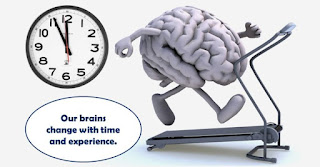AQA A-LEVEL: Biopsychology - Biological Rhythms
BIOLOGICAL RHYTHMS
Any change in physiological activity that repeats periodically
Any change in physiological activity that repeats periodically
- CIRCADIAN - Lasts 24hrs like the sleep/wake cycle, body temperature, hormones
- INFRADIAN - Lasts more than 24hrs like menstruation, hibernation and SAD
- ULTRADIAN - Lasts less than 24hrs like the stages of sleep, feeding
INFRADIAN RHYTHMS (24hrs+)
There is a psychological disorder called seasonal affective disorder (SAD) in which sufferers experience depression in only the winter months.
Another example is the mensuration cycle which starts with
- The follicular phase is between 10-14 days where oestrogen and progesterone levels are low.
- Endometrium grows and prepares for pregnancy and the size of the eggs triple.
- Ovulatory phase where oestrogen levels increase and by day 14 the largest egg is released into fallopian tubes
ULTRADIAN RHYTHMS (-24hrs)
- Feeding patterns of animals, and the patterns of human sleep which go through different stages every 90 minutes.
CIRCADIAN RHYTHMS (24hrs)
- Sleep-Wake cycle, our strongest sleep drive occurs in two dips, 2-4am and 1-3pm
- The sleep-wake cycle is influenced by internal and external factors known as endogenous pacemakers and exogenous zeitgebers
- ENDOGENOUS PACEMAKERS - Rhythms generated internally such as the SCN (suprachiasmatic nucleus) which regulated the secretion of melatonin in the pineal gland which affects sleep. Which is connected to the retina of the eye
- EXOGENOUS ZEITGEBERS - Such as light which also connects to the retina.
SIFFRE 1975 - Spent 6 months in a cave without external cues and found his circadian rhythms varied from 25-30 hrs which highlight the existence of an internal circadian clock and the importance of exogenous zeitgebers in regulating the internet biological clock.
EVALUATION
RESEARCH SUPPORT - Ralph et al 1990
- Took the brain of an abnormal hamster who had an unusual circadian rhythm of only 20hrs. Translated abnormal hamster brain to a normal adult hamster, and the normal hamster took on the abnormal circadian rhythms.
METHODOLOGICAL ISSUES W/ RESEARCH
- Evolutionary discontinuity, we're not similar to hamsters. We have a LAD (Language acquisitory device) which sets us apart from other animals. Results and findings cannot be applied fully.




Comments
Post a Comment